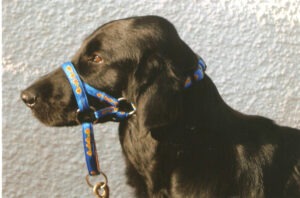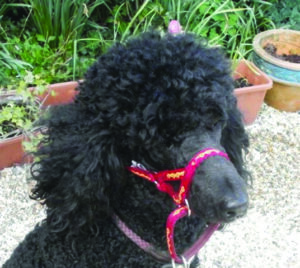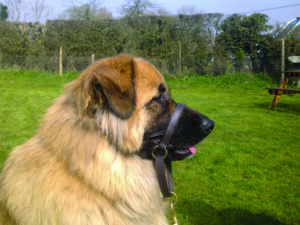How to Get a Dog Used to a Headcollar
Introducing something new to your dog, especially something they’ll be wearing on their face, can take time, patience, and encouragement. But getting your dog used to a headcollar doesn’t have to be stressful.
With the right approach, a little consistency, and a lot of positive reinforcement, your dog can not only accept wearing a headcollar but also enjoy the calmer, more controlled walks that come with it.
At Dogmatic, we’ve helped thousands of owners make this transition successfully. Our award-winning headcollars are designed to be kind, comfortable, and practical, and with a gentle introduction, they become a game changer for daily walks.
Whether you’ve just bought your first Dogmatic Headcollar or are considering making the switch, here’s how to get your dog used to their new walking companion.
Why Choose a Headcollar?
Before we dive into the ‘how’, it’s helpful to understand the ‘why’. Headcollars are often recommended by trainers, vets, and experienced owners for one simple reason: they give you gentle control over your dog’s direction without relying on strength or causing discomfort.
Unlike traditional collars that can pressure your dog’s throat or standard harnesses that don’t always reduce pulling, a headcollar allows you to guide your dog’s head, which naturally influences where the body goes.
At Dogmatic, our designs ensure the headcollar doesn’t ride up into your dog’s eyes or twist their head uncomfortably. It stays in place and works with your dog’s natural movement to make walking smoother and more enjoyable for everyone.

Step One: A Calm Introduction at Home
Start your dog’s headcollar journey somewhere they feel safe and relaxed—your home. Let them sniff and inspect the headcollar first. There’s no need to rush. Just leave it out where they can explore it at their own pace.
Once they’ve shown some curiosity, gently hold the headcollar and reward any interaction with a treat and a cheerful voice. The goal is to build positive associations right from the beginning.
For dogs that are a little more hesitant, you can rub a treat or a bit of their favourite food on the inside of the noseband to encourage them to place their snout through the loop.
Repeat this a few times over a few days, always rewarding calm, curious behaviour. Don’t try to fasten anything just yet; this is about familiarity, not formality.
Step Two: Trying It On, Gently and Gradually
Once your dog is happy to put its nose through the loop, gently fasten the headcollar behind its ears.
At first, keep it loose and just leave it on for a few seconds. Reward them with a treat and lots of praise, then remove it. Keep these sessions short and positive.
Gradually increase the time your dog wears the headcollar indoors. Let them walk around the house, play with a toy, or enjoy some fuss while it’s on.
The key here is distraction; if your dog is busy doing something they enjoy, they’re less likely to fixate on the new sensation of wearing the headcollar.
If they try to paw at it or rub their face on the floor, that’s completely normal. Stay calm and gently redirect their attention to something positive, like a treat or game. Avoid scolding or making a fuss; it’s all about creating a calm, encouraging atmosphere.

Step Three: Adding the Lead and Moving Together
Once your dog is comfortable wearing the headcollar indoors, attaching the lead is a breeze. Let your dog walk around the house with the lead clipped on, but don’t try to guide it just yet. Keep things casual and allow it to adjust to slight tension.
After a few sessions, start walking them gently indoors or in the garden. Keep your voice light and your movements relaxed. Offer treats at your side to encourage them to walk beside you and build the habit of checking in with you as they move.
At this stage, avoiding sudden pulls or jerks is especially important. One of the main benefits of the Dogmatic Headcollar is how smoothly it helps guide your dog’s movement, so keep that smoothness in your handling, too.
Use gentle, steady pressure and reward any calm walking with lots of encouragement.
Step Four: Heading Outdoors
Now comes the exciting part: taking your training outside. Start somewhere quiet, like your garden, driveway, or a low-traffic path. Keep the first few outdoor sessions short and reward your dog frequently for walking calmly beside you.
If your dog gets distracted or tries to pull, stop and wait for it to return to your side. You don’t need to correct or scold, just let it figure out that only calm, loose-lead walking gets the walk going again.
Over time, as your dog’s confidence grows, you can start exploring busier areas. Keep a relaxed pace, use your cue words, and stay upbeat. The more consistent and positive you are, the faster your dog will adjust.

Be Patient, Every Dog is Different
Some dogs take to a headcollar in a day or two. Others need a week or more of gradual introductions. Both are perfectly normal. What matters most is that you go at your dog’s pace and make each step positive.
If your dog has had negative experiences with collars or training equipment, it may take longer to trust something new. That’s okay. Stay patient, stay kind, and keep those rewards flowing.
Remember: the headcollar is not a punishment tool. It’s a communication aid that allows you and your dog to enjoy walks with less stress and more freedom.
Why The Dogmatic Difference Matters
We know many headcollars are on the market, but not all are equal. What makes Dogmatic different is the attention to detail in every design.
Our headcollars are made to fit securely and comfortably, without slipping, twisting, or riding up into the eyes. That means a more comfortable experience for your dog and greater peace of mind for you.
Our designs are also robust and long-lasting, offering a better fit and walking experience overall.
It’s why Dogmatic headcollars have been awarded “Product I Can’t Live Without” by Your Dog Magazine eleven times as well as ‘Best Training Product 2025’, and why so many owners make us part of their walking routine for life.
Walking in Step, Together With Dogmatic
Helping your dog get used to a headcollar is a small investment of time that pays off significantly.
With every calm, confident step you take together, you’re not just training; you’re building trust, strengthening your bond, and turning walks into a joy for both of you.
Whether you’re just starting or switching from another solution, the Dogmatic Headcollar is here to support you every step of the way. At the end of the lead, there should always be a happy dog and a relaxed, smiling owner.
